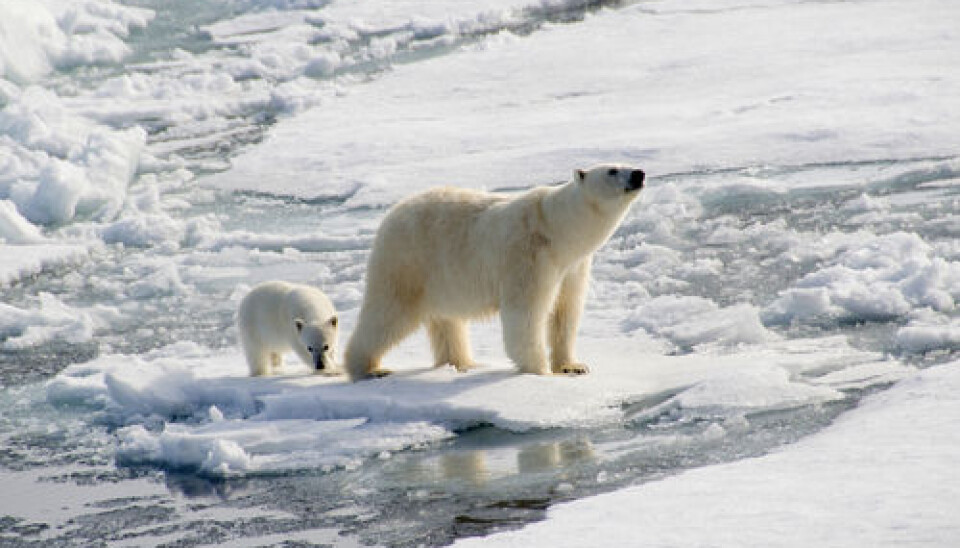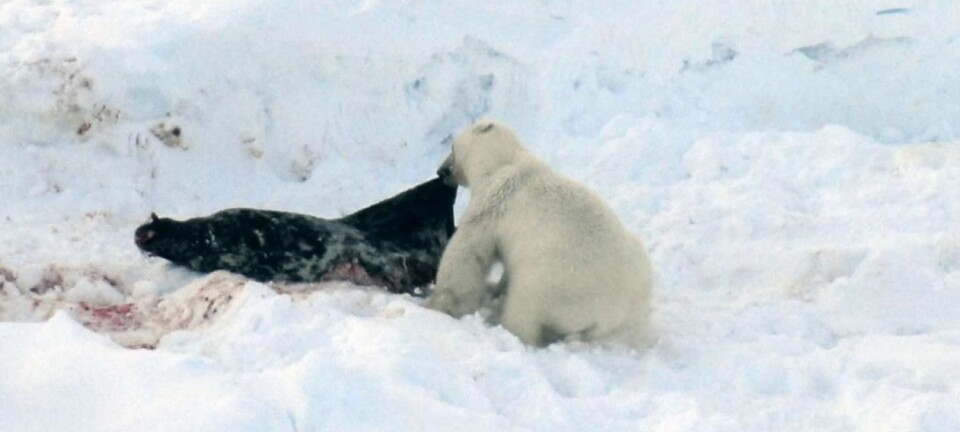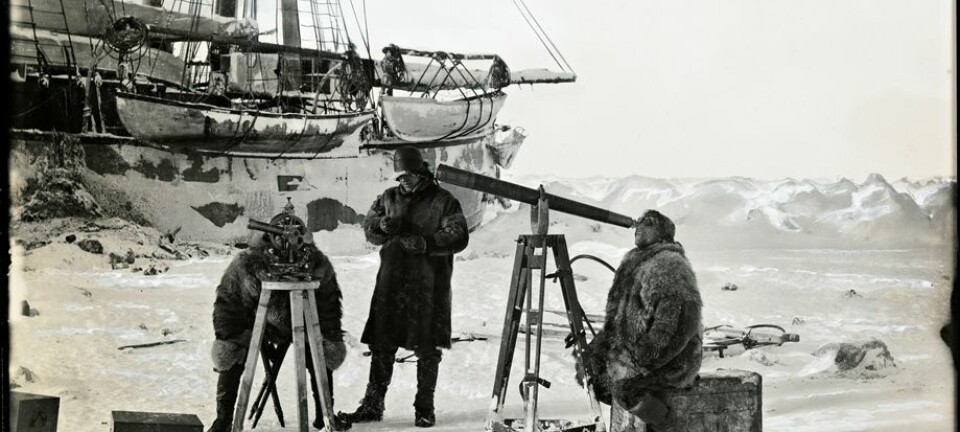
Arctic bacteria converts mercury
Bacteria in the Arctic converts harmful mercury to less harmful, airborne mercury. This helps protect polar bears and seals from poisonous human emissions.
The Arctic is the last stop for many toxic chemicals. This includes, among others, much of the 7.500 tonnes of mercury resulting from human emissions each year.
A recent study by researchers from Aarhus University, published in the scientific journal FEMS, Microbiology Ecology, show that bacteria in Arctic snow convert up to 10 per cent of harmful mercury into harmless mercury.
Mercury has detrimental effects when it is absorbed into the body, for example leading to brain damage in fetus.
Furthermore, it greatly reduces fertility, and as such is a major threat to an already vulnerable species like the polar bear that, at the top of the Arctic food chain, easily accumulates large amounts of mercury in the body. These bacteria aid in diffusing the effects of mercury poisoning in the 25,000 polar bears left on Earth.
“The Arctic food chain is highly exposed to mercury, because there are some enormously high concentrations that accumulate in animals at the top of the food chain. Therefore, it’s interesting that bacteria can help regulate how much mercury enters the Arctic food chain,” says Niels Kroer, head of the Department of Environmental Science at Aarhus University.
Bacteria make mercury harmless
When mercury is emitted into the environment in lower latitudes – by coal plants among other sources – it is carried by wind to the Arctic where it falls on snow and ice after being converted through a series of chemical reactions to a salt containing mercury.
Some of this mercury is released back into the atmosphere, but some is converted to the highly toxic organic methylmercury, which can grow in concentration through the food chain and end up in seals and polar bears.
Mercury-resistant bacteria can, by means of chemical reactions, convert the mercury salt back to airborne mercury, which then disappears from the Arctic on the next strong wind. In this way it is prevented from entering the food chain.
“Mercury is also toxic to the bacteria. So it has developed a form of resistance that works by removing all mercury from its immediate environment. This is also beneficial for the polar bears,” says Kroer.
Narwhals have it worse than polar bears
Professor Rune Dietz from Bioscience at Aarhus University studies large marine mammals and has also researched the effects of anthropogenic pollution on animals like polar bears.
There are other animals at the top of the food chain that have it much worse than polar bears, who are capable of getting rid of mercury through their fur, says Dietz.
“The most vulnerable are the toothed whales like belugas, narwhals, and pilot whales. I am most concerned about them when it comes to mercury pollution,” says Dietz, who doubts whether the bacterial contribution to mercury removal is enough to make a real difference at this time.
“When we talk about mercury accumulation in animals, it has risen to be 20 times as high in polar bears over the past 150 years. So whether 10 per cent makes a difference, I’m not sure. It may be that this becomes more interesting to talk about in the future, because the bacteria may become more active when the Earth's temperature rises,” says Dietz.
A third of bacteria in snow can transform mercury
Researchers found that up to 30 per cent of the bacteria in the Arctic was able to convert mercury into its less harmful form.
By calculating the amount of bacteria in the ice, researchers also estimated that the bacteria produce between 2 and 10 per cent of the total volume of harmful mercury that is removed from the Arctic environment.
----------------
Read the original story in Danish on Videnskab.dk
Translated by: Zöe Robertson











